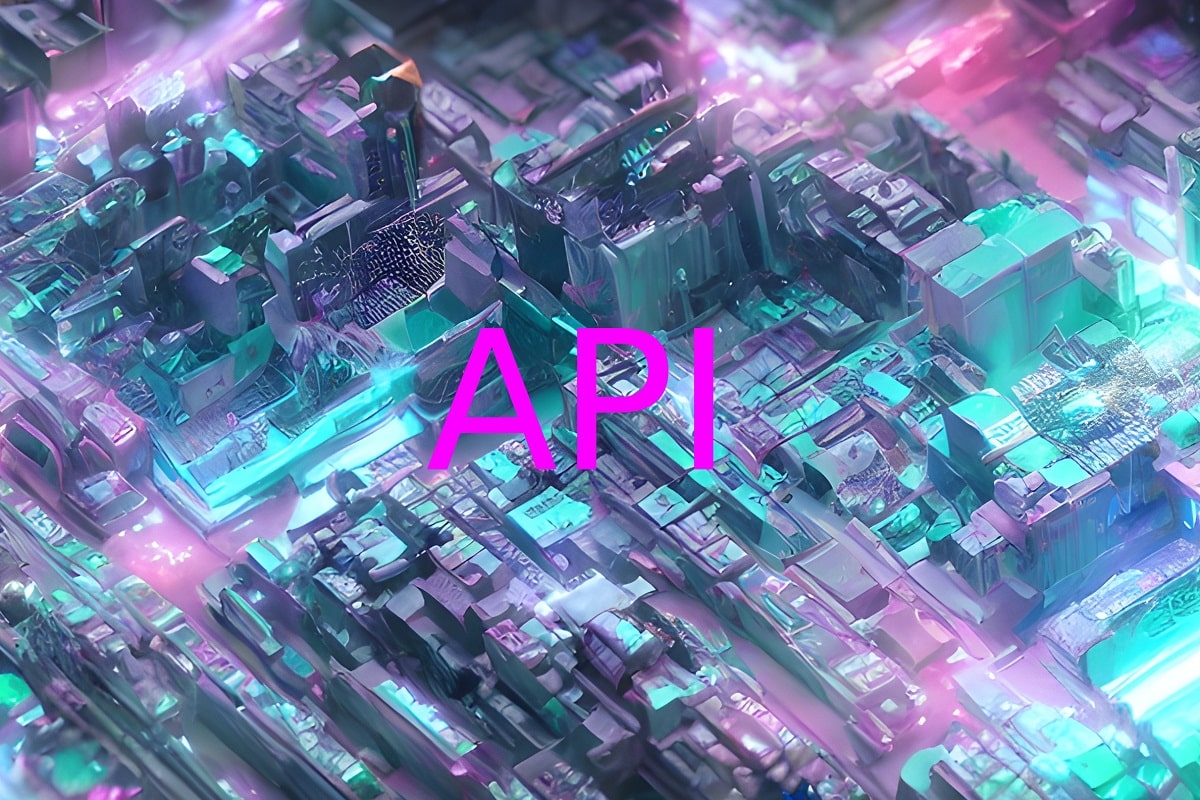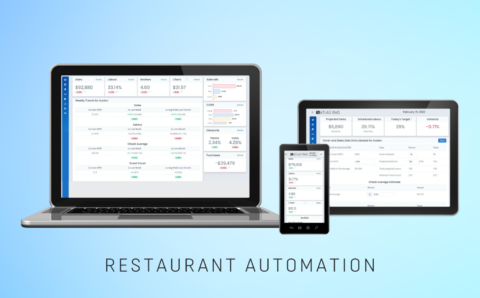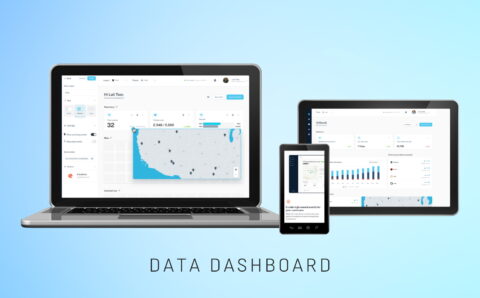
API (Application Programming Interfaces) development is an indispensable part of the up-to-date software architecture, allowing for seamless communication and data exchange between the necessary applications.
Python, with its simplicity, versatility, and robust ecosystem, is a great option for API development. This programming language offers frameworks for streamlining the creation of APIs by offering pre-built structures, libraries, and tools that accelerate the development flow in parallel with time-to-market.
API development is an importnat part of modern software engineering. Frameworks play a crucial role in this process since they simplify complex tasks and ensure efficient communication between disparate software solutions. Some of the top Python frameworks are specifically tailored to API development services. By highlighting the outstanding features, advantages, and use cases of each framework, this post will equip software engineers and stakeholders with meaningful insights to make informed choices when considering how to develop an API with Python. Bookmark this comprehensive guide on the most effective Python frameworks to enhance API development efforts.
Table of Contents:
Key Criteria for Evaluating Python Frameworks
When selecting an appropriate Python framework for API development, it’s essential to make a choice based on the core factors that will determine the success and efficiency of your project. There’s a list of parameters to bear in mind when evaluating different frameworks.
Performance and scalability
The performance of your API directly relates to its efficiency, allowing it to cater to the higher numbers of users and operate reliably and smoothly. Evaluate how well the framework handles heavy workloads and if it can scale seamlessly as your user base grows.
Memory management is another facet that significantly impacts API performance. A framework with effective memory management strategies boosts the use of system resources, preventing bottlenecks and slowdowns. This attribute becomes even more essential in the face of heightened user activity or concurrent requests where memory efficiency can be a game-changer in maintaining a consistent user experience.
Furthermore, in the context of modern digital interactions where asynchronous operations are becoming prevalent, the ability of a framework to support asynchronous requests is a standard. Asynchronous support allows your API to successfully operate numerous queries at the same time, enhancing responsiveness and decreasing wait times. This becomes particularly evident during times of heightened user engagement or when dealing with data-intensive operations.
Ease of use
A straightforward and easy-to-grasp framework can substantially speed up the development process. However, if you face the necessity to leverage a tool which is unfamiliar to your development team, it is essential to keep in mind the learning curve associated with the framework and how quickly your software engineers can become knowledgeable and profound in using it. An intuitive framework with clear documentation and straightforward syntax will facilitate faster development cycles as well as reduce errors and obstacles within the API development process.
Flexibility and customization
Every project has unique requirements, so a high flexibility of a framework is crucial. We highly recommend you assess whether the framework allows you to tailor your API to meet your specific needs. A one-size-fits-all approach is seldom effective. Instead, a framework that accommodates customization and addresses specific functionalities making a development process streamlined and efficient.
Pick an option for features like modular design, extensible architecture, and the ability to integrate with third-party libraries to ensure you can implement bespoke functionalities effectively. As for the modular design, it is a cornerstone of a flexible framework, which enables developers to assemble APIs like building blocks. This approach enables you to choose components that seamlessly fit into your project’s architecture, reducing the bloat that often comes with unnecessary features.
Community support and documentation
An active and engaged community of software engineers can be a truly powerful resource. That’s because it can provide assistance, offer solutions to challenges, and share best practices to stick to. Evaluate the framework’s community forums, documentation quality, and the frequency of updates to ensure ongoing support and access to a comprehensive knowledge hub. This collaborative ecosystem promotes mutual growth and ensures that your chosen framework remains relevant and adaptive in the ever-evolving sector of technology.
Integration with databases and other tools
Your API will likely need to seamlessly interact with databases, frameworks, and various software components to ensure seamless functionality.
For smooth operation, you should check whether the framework supports various databases and how well it integrates with common tools and services for authentication, caching, and logging. A framework that facilitates easy integration can save development time and enhance the overall functionality of your API.
These factors can help you choose the best Python framework for API development and allow you to make a wise and appropriate decision that aligns with your project’s specific requirements. Each factor is significant in determining the long-term success and maintainability of your API. A balance between performance, usability, flexibility, community support, and integration capabilities will make you all set to start the way for a successful API development journey.
Top Python Frameworks for API Development
After determining the required metrics, you should review the frameworks of Python aimed at API development, outlining the strengths and characteristics of each option as it will influence the project cost-effectiveness. API development cost with Python frameworks will significantly decrease due to the extensive availability of open-source options that further streamline the process, reducing the need for building functionalities from scratch and ultimately saving time and resources.
Flask
When it comes to the best Python API frameworks, Flask stands out as a popular and versatile option. It is known for its minimalist design and flexibility, making it an excellent choice for Python API development projects of varying complexities.
Flask is a micro web framework that features simplicity and ease of use. It provides the essentials for building web applications, allowing developers to make use of only the components they need, leading to a lightweight and efficient application.
-
- Lightweight and minimalistic approach. The Flask’s “micro” peculiarity signifies its plain and minimalistic nature. In contrast to full-stack frameworks, Flask leaves many decisions, such as database choices and extensions, to developers, enabling a tailored approach to each project’s requirements.
- Extensive library support. Despite its minimalistic approach, Flask doesn’t lack in terms of library support. Its ecosystem offers a wide range of extensions that can seamlessly integrate functionalities like database access, form validation, authentication, and more.
- Ideal for small to medium-sized projects. Flask’s simplicity and flexibility are particularly suitable for small to medium-sized projects. It’s particularly well-suited for startups, prototypes, and projects where a rapid development cycle is essential.
Netflix’s use of Flask includes components of their edge gateway, handling incoming API requests efficiently. Similarly, Airbnb employs Flask to create APIs that support various features on its platform, demonstrating its flexibility in building diverse and scalable APIs.
Django Rest Framework
Django Rest Framework (DRF) stands out as a popular and comprehensive framework for building Python-based APIs. This framework is built on top of Django, a high-level Python web framework specifically designed to simplify the process of building RESTful APIs.
-
- Flexible and customizable framework. One of the vital features of DRF is its flexibility. It provides a wide spectrum of tools that allow to customize and adapt the APIs to match the project’s unique requirements. This includes the ability to define how data is presented and serialized, enabling APIs to return data in various formats, such as JSON or XML.
- Robust authentication system. Security is a critical point to take care of regarding REST API development, and DRF addresses this by offering a robust authentication system. It supports various authentication methods, such as token-based authentication, OAuth1a, and OAuth2. It streamlines the process of implementing secure user authentication and access control for the APIs.
- Powerful serialization. DRF excels in data serialization, a process that transforms complex data types, such as Django models, into formats that can be rendered into JSON, XML, or other content types. The serialization flow is highly customizable, allowing for full control of how data is furnished, ensuring efficient data transmission between the API and clients.
Django Rest Framework’s popularity is conditioned by its ability to provide developers with a comprehensive set of tools and features to build robust APIs efficiently. In particular, Django is used by 85,777 websites, as WebTechSurvey states. Thus, this framework comes in use among businesses of all sizes.
FastAPI
For successful API development, the FastAPI framework combines exceptional performance, intuitive design, and a rich choice of relevant, cutting-edge features. Designed to cater to the demands of high-performance applications, FastAPI offers a range of benefits for moderate and large-scale projects.
It is a Python web framework the purpose of which comprises building APIs while providing for the high speed and efficiency of the process. It leverages asynchronous programming, which allows multiple tasks to be executed concurrently without blocking the main thread. This architecture contributes to rapid response times and enhanced user experiences, which are the primary points to success in the market.
-
- High performance using asynchronous programming. FastAPI’s asynchronous support is the best fit for APIs that require real-time updates and interactions. It can handle a large number of simultaneous connections efficiently, making it an ideal choice for applications that demand high concurrency and responsiveness.
- Automatic generation of API documentation. One of FastAPI’s standout features is its ability to automatically generate API documentation. Leveraging standardized Python type hints, FastAPI creates interactive and visually appealing documentation that outlines endpoints, request parameters, and response structures and even allows for direct API testing within the documentation interface.
- Type hinting for input validation. The use of type hinting extends beyond documentation – FastAPI employs type hints for automatic input validation, ensuring that incoming data matches the expected types. This effective validation reduces errors and enhances the reliability of your API.
Contrary to traditional Python API framework like Flask and Django Rest Framework, FastAPI is highlighted for its performance-oriented architecture and advanced features. The first two options are excellent choices for various web applications, while FastAPI’s concentration on API development, asynchronous support, and automatic documentation detaches it from API-centric projects.
FastAPI has gained adoption in various industries and among prominent companies like Uber and Netflix. According to Uber.com, FastAPI was adopted to spawn a REST server which may be necessary to obtain predictions. FastAPI’s ability to handle high-throughput requests while maintaining minimal overhead has made it the best Python web development framework for organizations seeking efficient and robust API solutions.
AIOHTTP
AIOHTTP is one more well-suited option for projects that demand high-performance asynchronous programming, which is demanded among every up-to-date software solution.
This powerful Python framework is specifically designed for asynchronous web applications and API development. Its valuable features are top performance and scalability. This is why it comes as the best Python API framework for projects that demand high-speed data processing and real-time interactions.
-
- Asynchronous programming and performance. AIOHTTP strongly supports asynchronous programming, enabling tasks to run simultaneously without waiting for each other to complete. As we’ve already outlined, this approach enhances effectiveness and responsiveness. AIOHTTP employs Python’s asyncio library, which provides developers with the opportunity to write non-blocking code that efficiently handles a large number of concurrent connections.
- Built-in web server. AIOHTTP comes in use with an embedded web server that facilitates the development and testing of APIs without the need for additional components. Such a built-in server optimizes the development workflow, allowing to focus on creating robust APIs rather than setting up infrastructure.
- Robust WebSocket support. WebSocket support is crucial for applications that require real-time communication. AIOHTTP offers robust WebSocket support, enabling bidirectional communication between clients and the server. This feature is particularly advantageous for applications like chat systems, live notifications, and online gaming platforms.
AIOHTTP has found its application through its successful implementation in various projects. Particularly, it has found applications in building high-performance APIs for real-time applications such as chat platforms, gaming servers, and financial data feeds due to the asynchronous capabilities. They allow efficient processing of multiple simultaneous connections, ensuring top-tier user experiences and efficient data processing in these dynamic contexts.
Pyramid
In the context of AOI development, Pyramid is renowned for its flexibility and modularity. It helps developers create APIs that precisely match their project’s requirements while maintaining a streamlined development process.
Pyramid is designed with an emphasis on simplicity and scalability. It follows the “pay only for what you use” strategy, allowing developers to choose the components they need, resulting in efficient, neat, and uncluttered codebases. This design approach makes Pyramid a perfect framework for projects of varying scales, from small startups to large enterprises.
-
- Flexibility and modularity. Pyramid’s architecture is founded around modularity, giving developers the freedom to select components that best align with their goals. This modular approach enhances customization, enabling the creation of APIs that align with the specific functionalities without excessive features. The high flexibility makes Pyramid demanded among tailored solutions.
- Well-suited for complex applications. The modular architecture of Pyramid showcases its power when handling complex applications. Its extensibility allows developers to successfully interconnect with other tools and libraries, ensuring the smooth interactions of sophisticated API functionalities. As APIs continue to evolve in complexity, Pyramid’s design aligns well with the demand for comprehensive and adaptable solutions.
- Integration with various databases and authentication systems. A vital aspect of API development is data management and security, and Pyramid excels in this sector, enabling seamless integration with diverse databases and authentication systems. This feature is significant for APIs that rely on multiple data sources and require robust security measures.
Pyramid has gained popularity and recognition through its successful implementation in various projects that demand a high degree of customization and scalability. For example, according to Python Brochure, SurveyMonkey makes use of Pyramid’s modular architecture to create APIs that seamlessly integrate with their existing systems, providing tailored solutions for their survey and data collection services.
Calculate Your API Development Costs
Learn the factors that impact API development costs and get an estimate for your project.
How to choose a Python framework for API development
Selecting the right Python framework for API development is a critical decision that significantly impacts the success and efficiency of your project. To make an informed choice, several key considerations must be evaluated, taking into account the specific needs and goals of your project.
Project requirements and size
The first step in framework selection is aligning the chosen framework with your project’s requirements and scope. Consider whether your API is a small, single-purpose application or a large, complex system with multiple functionalities. Different frameworks cater to varying project sizes and complexities. Choosing a framework that fits your project’s scale ensures that you have the right tools to meet your goals without unnecessary overhead. For smaller, focused APIs, selecting a framework that thrives on simplicity and minimalism could work perfectly. Frameworks tailored for nimbleness and agility, adept at swiftly fulfilling specific tasks, resonate well with such projects. Conversely, if your API aspires to encompass an extensive array of functionalities, a framework with robust architecture and modular design should be a priority. These frameworks have the potential to accommodate complex requirements without compromising on performance or scalability.
Developer expertise and familiarity
The proficiency of your development team with a particular framework plays an indispensable role in the success of your project. Opting for a framework that your team is already familiar with can significantly boost the development process. However, in cases where your team lacks familiarity with a specific framework that might be ideal for your project, it’s important to assess the resources available for upskilling. This covers evaluating the comprehensiveness of documentation, the vibrancy of the community, and the availability of training resources. Also please feel free to reach out to our software engineering experts for guidance and support in this process. A framework with robust documentation and an active community can ease the process of learning and adopting a new tool. Additionally, considering the potential for onboarding assistance or training can further facilitate the smooth integration of an unfamiliar framework into your team’s skill set.
Future maintenance and updates
The development journey doesn’t end once your API is up and running. Regular maintenance and updates are essential to ensure its longevity. Consider the framework’s update frequency, community support, and backward compatibility. Frequent updates indicate an active and responsive development team. Regular releases not only address bugs and vulnerabilities but also incorporate improvements and new features, ensuring that your API remains current and competitive. An active community and consistent updates imply that the framework is evolving and will likely be supported for years to come. Frameworks with good backward compatibility also make future updates smoother, minimizing disruptions during the integration of updates. This facet is integral in maintaining API stability, minimizing downtime, and mitigating the need for extensive code alterations.
**Need Expert API Integration Services?**
Build robust, scalable, and secure APIs with our experienced development team.
Performance and scalability needs
The performance and scalability requirements of your API should also be considered. APIs that will experience high traffic volumes or handle complex computations demand a framework with robust performance capabilities. Thus, it is reasonable to pick frameworks offering asynchronous support, optimized routing mechanisms, and efficient memory management to ensure your API performs seamlessly under varying loads. This especially relates to APIs that experience significant traffic fluctuations, such as those in e-commerce, social media, or real-time data processing, which requires a framework that can adeptly perform seamlessly under varying workloads and handle complex queries.
| Python Framework | Benefits |
|---|---|
| Flask | Lightweight and minimalistic approach Extensive library support Ideal for small to medium-sized projects |
| Django Rest Framework | Flexible and customizable framework Robust authentication system Powerful serialization |
| FastAPI | High performance using asynchronous programming Automatic generation of API documentation Type hinting for input validation |
| AIOHTTP | Asynchronous programming and performance Built-in web server Robust WebSocket support |
| Pyramid | Flexibility and modularity Well-suited for complex applications Integration with various databases and authentication systems |
As we conclude this research of Python frameworks for API development, it’s obvious that the right framework can significantly impact the efficiency, scalability, and success of your projects.
Python frameworks offer not only pre-built structures and libraries that expedite the development process but also a creative and enthusiastic community that provides support, knowledge, and solutions to challenges. Python’s readability and versatility, accompanied by the capabilities of these frameworks, contribute to accelerated development cycles, reduced errors, and boosted scalability.
The importance of selecting a framework that aligns with your project’s goals is the primary thing to take care of. The project’s scale, complexity, performance needs, and your team’s skills are all the essential factors that should form and impact your final decision. Carefully evaluate the features and capabilities of each framework in the context of your project’s requirements to ensure a seamless development experience and a successful outcome. Besides, you can always contact the PLANEKS team that will consult you on the most relevant Python technology stack for your particular project.
While this guide provides insights into the discussed Python API frameworks, it’s essential to recognize that there is no one-size-fits-all solution. As an experienced software development vendor, our team at PLANEKS has explored and tested various frameworks for API creation, and we’re able to suggest which one best suits your particular use case. Thus, if you find yourself uncertain about making the right choice, don’t hesitate to reach out to us for a comprehensive tech guidance.
Python frameworks provide developers with ready-to-use tools, libraries, and templates that expedite the creation of API, and allowing developers to focus on the unique functionalities of their APIs rather than reinventing the wheel with basic functionalities. The readability and simplicity of Python’s syntax contribute to accelerated development cycles and reduced failure rates. Thus, developers can translate their ideas into functional code more swiftly and with greater accuracy.

Upcomer
Upcomer, the ultimate esports platform, was enhanced to provide a responsive, robust user experience with improved performance and speed.

Restaurant Management
Implemented a cloud-based solution combining POS and inventory data into a single dashboard, improving operations and increasing profitability.

Spontivly
Spontivly, a top data platform, integrates with 120+ systems, delivering 50% faster workflows and streamlined operations for diverse companies.
Furthermore, the vibrant communities surrounding these frameworks offer a rich set of resources, tutorials, and forums. This support ecosystem accelerates problem-solving and encourages collaborative learning, empowering developers to handle challenges efficiently.
Python-based API frameworks also foster a standardized approach to API development. By adhering to best practices and established architectural patterns, these frameworks ensure that APIs are built with scalability, maintainability, and security in mind. In terms of scalability, the frameworks we’ve discussed today facilitate the creation of APIs that can handle varying levels of traffic and user demands. Features like asynchronous support and optimized routing mechanisms enhance an API’s ability to scale seamlessly.
Lastly, the modularity and flexibility of Python frameworks allow developers to create APIs that cater to their specific project needs. This adaptability ensures that APIs can evolve alongside changing requirements and technological advancements.
In essence, the selection of a Python framework comes as a significant milestone in your API development process. It sets the stage for efficient implementation, performance optimization, and fruitful project results. By choosing the right framework, you’re equipped to consider employing API development services from a credible tech vendor to seamlessly integrate with other systems, enhance user experiences, and bring innovation to business performance.

